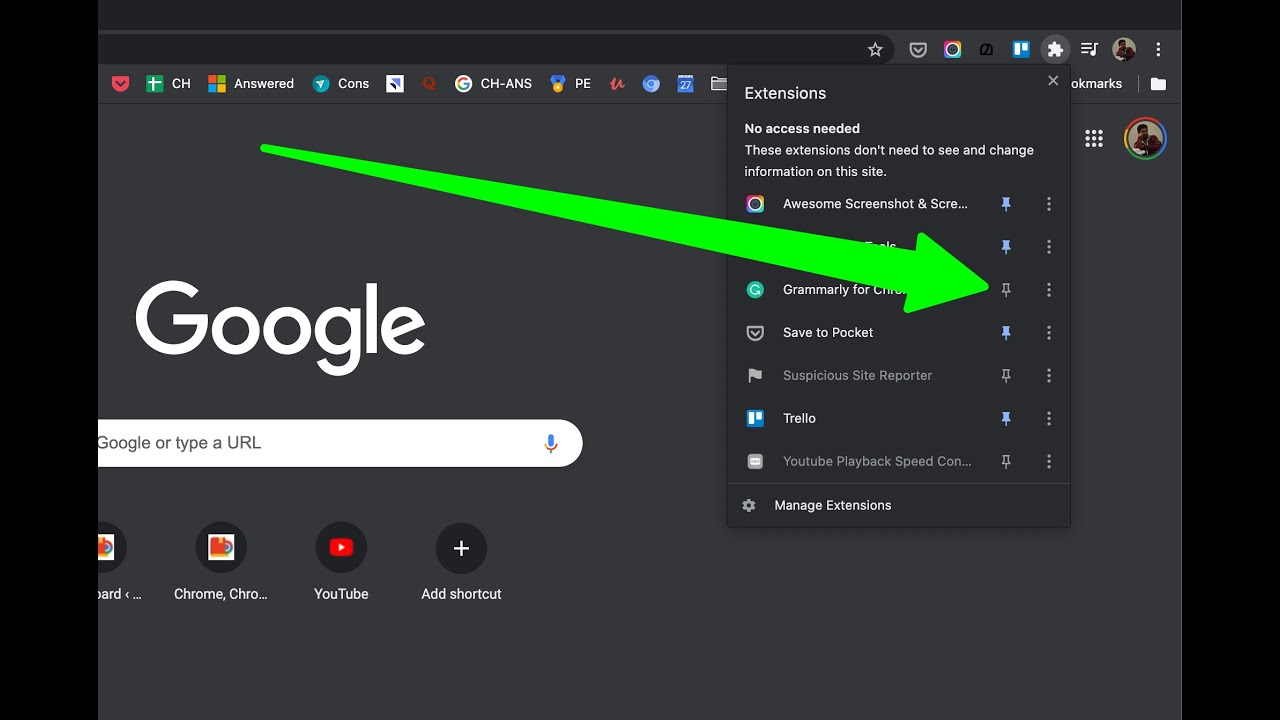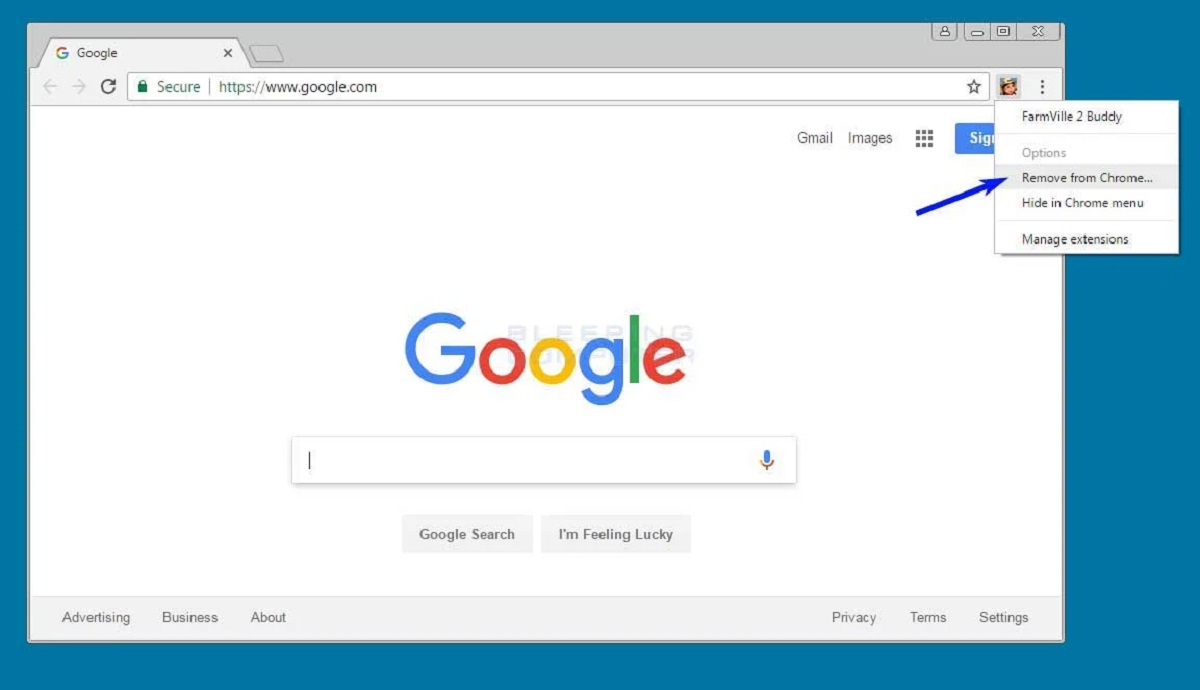Introduction
The Google Chrome browser is renowned for its user-friendly interface and customizable features, including the ability to add toolbars for quick access to various functions and services. While toolbars can enhance productivity and convenience, unwanted or excessive toolbars may clutter the browser interface and hinder the browsing experience. Fortunately, Google Chrome offers a straightforward process to manage and remove toolbars, allowing users to tailor their browsing environment to their preferences.
In this guide, we will explore the step-by-step process to effectively remove unwanted toolbars from Google Chrome. Whether you inadvertently installed a toolbar or simply wish to declutter your browser, this comprehensive walkthrough will empower you to streamline your browsing experience and optimize the functionality of your Google Chrome browser.
By following the instructions outlined in this guide, you will gain valuable insights into managing toolbars within Google Chrome, enabling you to maintain a clean and efficient browsing environment. Let's embark on this journey to declutter and customize your Google Chrome browser, ensuring that it aligns with your unique browsing needs and preferences.
Step 1: Open Google Chrome
To begin the process of managing and removing unwanted toolbars from Google Chrome, the first step is to open the browser. Launching Google Chrome is a simple and familiar task for most users, and it serves as the initial gateway to accessing the browser's settings and customization options.
To open Google Chrome, locate the browser's icon on your desktop, taskbar, or within your applications folder. Once you have located the icon, double-click on it to initiate the browser. Alternatively, you can also launch Google Chrome by clicking on its icon in the system tray or by searching for it in the Windows Start menu or macOS Spotlight search.
Upon opening Google Chrome, you will be greeted by the browser's interface, which typically displays the homepage or the last accessed webpage. The browser's omnibox, located at the top of the interface, serves as the address bar and search field, allowing users to enter website addresses, search queries, and commands.
By successfully opening Google Chrome, you have taken the crucial first step in the process of managing and removing unwanted toolbars. With the browser now accessible, you are ready to proceed to the next step and delve into the toolbar settings to customize and optimize your browsing experience.
Opening Google Chrome is a fundamental yet essential aspect of this process, as it sets the stage for accessing the browser's configuration options and initiating the necessary steps to manage and remove unwanted toolbars. With the browser now open, you are poised to embark on the subsequent steps, which will empower you to streamline your browsing environment and tailor it to your specific preferences.
Step 2: Access the Toolbar Settings
Accessing the toolbar settings in Google Chrome is a pivotal step in the process of managing and removing unwanted toolbars. By navigating to the browser's settings, users can gain control over the installed toolbars, enabling them to customize their browsing experience and declutter the interface. The toolbar settings encompass a range of options, allowing users to enable, disable, or remove specific toolbars based on their preferences.
To access the toolbar settings in Google Chrome, begin by locating and clicking on the three-dot menu icon in the top-right corner of the browser interface. This icon, often referred to as the "More" icon, opens a dropdown menu that provides access to various browser functions and settings. Upon clicking the icon, a menu will appear, presenting a selection of options for customizing and configuring Google Chrome.
Within the dropdown menu, navigate to the "More tools" option, which expands to reveal additional settings and features. Clicking on "More tools" will unveil a submenu, where you will find the "Extensions" option. Selecting "Extensions" will direct you to the dedicated page within Google Chrome where you can manage and customize the installed extensions and toolbars.
Upon accessing the "Extensions" page, you will be presented with a comprehensive list of the installed extensions and toolbars within Google Chrome. This page serves as the central hub for managing and customizing the browser's extensions, including the ability to enable, disable, or remove specific toolbars. Each toolbar is accompanied by options to configure its settings, providing users with the flexibility to tailor their browsing environment to their preferences.
By accessing the toolbar settings within Google Chrome, users can effectively manage and remove unwanted toolbars, thereby optimizing the browser's interface and enhancing the overall browsing experience. This pivotal step empowers users to take control of their browsing environment, ensuring that it aligns with their unique needs and preferences.
With the toolbar settings now accessible, you are poised to proceed to the subsequent steps, where you will delve into the process of disabling or removing unwanted toolbars from Google Chrome, ultimately streamlining your browsing experience and customizing the browser to your specific requirements.
Step 3: Disable or Remove Unwanted Toolbars
Upon accessing the toolbar settings within Google Chrome, users are empowered to take decisive actions to manage and declutter their browsing environment. The process of disabling or removing unwanted toolbars is a pivotal step in streamlining the browser interface and optimizing the overall browsing experience. By effectively managing the installed toolbars, users can tailor their Google Chrome browser to align with their specific preferences and functional requirements.
To disable or remove unwanted toolbars from Google Chrome, users can leverage the intuitive interface of the browser's extension management page. Within this dedicated section, each installed toolbar is accompanied by options that enable users to customize its behavior, ultimately allowing for seamless integration with the browsing experience.
Disabling Unwanted Toolbars
To disable a specific toolbar, users can simply locate the toolbar within the extension management page and toggle the switch associated with it. By deactivating the toolbar, users can temporarily remove its presence from the browser interface, providing an immediate decluttering effect. This approach is particularly beneficial for users who wish to retain the toolbar for potential future use while temporarily eliminating its visibility within the browser.
Removing Unwanted Toolbars
For users seeking a more comprehensive approach to decluttering their browsing environment, the option to remove unwanted toolbars entirely is also available within the extension management page. By selecting the removal option associated with the specific toolbar, users can effectively uninstall the toolbar from Google Chrome, eliminating its presence from the browser interface. This approach is ideal for users who no longer require the toolbar and seek to streamline the browser's interface without retaining unnecessary extensions.
By leveraging the intuitive options provided within the extension management page, users can seamlessly disable or remove unwanted toolbars from Google Chrome, thereby customizing the browser to their specific preferences and functional requirements. This proactive approach empowers users to maintain a clean and efficient browsing environment, ensuring that the browser's interface aligns with their unique needs and enhances their overall browsing experience.
With the unwanted toolbars effectively managed and removed from Google Chrome, users can proceed to the final step, where they will optimize the changes and ensure a seamless transition within the browser environment.
Step 4: Restart Google Chrome
After successfully managing and removing unwanted toolbars from Google Chrome, the final step involves restarting the browser to optimize the changes and ensure a seamless transition within the browsing environment. Restarting Google Chrome serves as a crucial step in solidifying the modifications made to the toolbar settings, allowing the browser to integrate the adjustments and present a streamlined interface aligned with the user's preferences.
To restart Google Chrome, users can simply navigate to the browser's interface and click on the three-dot menu icon located in the top-right corner. From the dropdown menu, select the "Exit" option to close the browser completely. Alternatively, users can utilize the keyboard shortcut by pressing "Alt + F4" on Windows or "Command + Q" on macOS to exit Google Chrome swiftly.
Once the browser has been closed, users can relaunch Google Chrome by locating the browser's icon on their desktop, taskbar, or within their applications folder. Upon reopening the browser, users will witness the seamless integration of the managed toolbar settings, with the interface reflecting the removal or disabling of unwanted toolbars.
Restarting Google Chrome not only finalizes the process of managing and removing unwanted toolbars but also ensures that the browser operates with the updated configuration, providing users with a clean and efficient browsing environment. By restarting the browser, users can validate the effectiveness of the changes made to the toolbar settings, affirming that the browsing experience is tailored to their specific preferences and functional requirements.
In essence, restarting Google Chrome marks the culmination of the process to manage and remove unwanted toolbars, affirming the successful implementation of the user's preferences within the browser environment. This final step solidifies the user's control over the browsing experience, ensuring that Google Chrome operates in alignment with their unique needs, ultimately enhancing their overall browsing experience.
With Google Chrome successfully restarted, users can navigate the browser with confidence, knowing that the managed toolbar settings have been seamlessly integrated, resulting in a decluttered and optimized browsing environment that reflects their individual preferences and functional requirements.
Conclusion
In conclusion, the process of managing and removing unwanted toolbars from Google Chrome empowers users to tailor their browsing environment to their specific preferences and functional requirements. By following the step-by-step guide outlined in this comprehensive walkthrough, users can effectively streamline their browsing experience, ensuring that the browser's interface remains clean, efficient, and optimized for their individual needs.
The journey begins with the simple yet crucial step of opening Google Chrome, providing users with access to the browser's interface and setting the stage for the subsequent actions to manage and remove unwanted toolbars. Navigating to the toolbar settings within Google Chrome serves as a pivotal step, enabling users to gain control over the installed toolbars and customize their browsing environment to align with their unique preferences.
Upon accessing the toolbar settings, users are empowered to take decisive actions to disable or remove unwanted toolbars, leveraging the intuitive interface of the browser's extension management page. Whether opting to temporarily disable a toolbar for potential future use or entirely removing it from the browser interface, users can seamlessly customize their browsing environment to reflect their individual preferences and declutter the interface.
The final step involves restarting Google Chrome, solidifying the modifications made to the toolbar settings and ensuring a seamless transition within the browsing environment. By relaunching the browser, users can validate the effectiveness of the managed toolbar settings, affirming that the browsing experience is tailored to their specific preferences and functional requirements.
In essence, the process of managing and removing unwanted toolbars from Google Chrome empowers users to maintain a clean and efficient browsing environment, ensuring that the browser's interface aligns with their unique needs and enhances their overall browsing experience. By taking proactive steps to customize the browser and optimize its functionality, users can navigate Google Chrome with confidence, knowing that the managed toolbar settings have been seamlessly integrated, resulting in a decluttered and optimized browsing environment that reflects their individual preferences and functional requirements.
By embracing the insights and guidance provided in this guide, users can embark on a journey to declutter and customize their Google Chrome browser, ensuring that it aligns with their unique browsing needs and preferences.
























